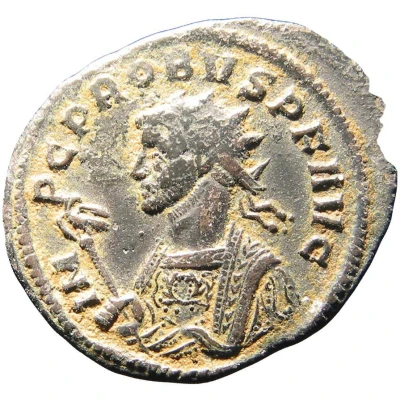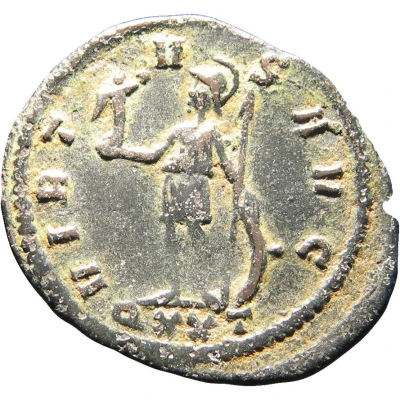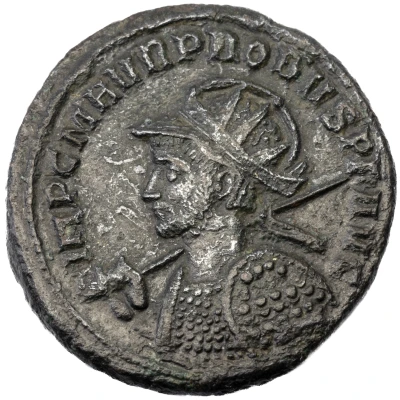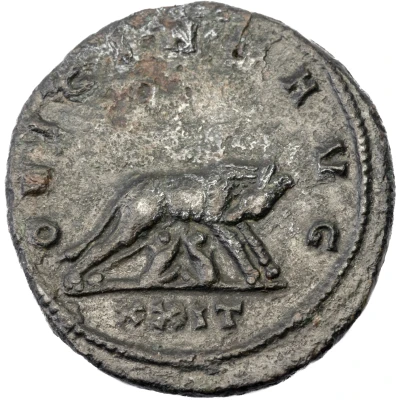Antoninianus - Probus Cuirassed, left; VIRTVS AVG; Victory
278 year| Silver | 3.5 g | 23 mm |
| Issuer | Rome › Roman Empire (27 BC - 395 AD) |
|---|---|
| Emperor | Probus (Marcus Aurelius Probus) (276-282) |
| Type | Standard circulation coin |
| Year | 278 |
| Value | Antoninianus (1) |
| Currency | Antoninianus, Reform of Caracalla (AD 215 – 301) |
| Composition | Silver |
| Weight | 3.5 g |
| Diameter | 23 mm |
| Shape | Round (irregular) |
| Technique | Hammered |
| Orientation | Variable alignment ↺ |
| Demonetized | Yes |
| Updated | 2024-10-05 |
| Numista | N#293552 |
|---|---|
| Rarity index | 100% |
Reverse
Soldier, helmeted, in military attire, standing left, holding Victory in right hand and spear in left hand; to right, shield.
Officina and mintmark in exergue.
Script: Latin
Lettering: VIRTVS AVG
Unabridged legend: Virtus Augusti.
Translation: Courage of the emperor.
Comment
RIC 436 lists four variations, being four bust types (bust type according to Pierre Bastiens grouping of bust types; see illustrated: probvs.net):
- radiate, draped, right (A bust; Numista #292784);
- radiate, cuirassed, right (B bust; Numista #293550);
- radiate, wearing imperial mantle, left, holding sceptre surmounted by eagle in right hand (H2 bust; Numista #293551);
- radiate, cuirassed, left (B1 bust; this coin).
RIC 436 was minted by the 4th officina (exergue mark QXXI) of Ticinum. According to Pink, the 4th officina used the reverse title VIRTVS AVG, combined with obverse legend Nr. 5 (IMP C PROBVS P F AVG), during the 4th emission, which was in the year 278. See Karl Pink, Der Aufbau der römischen Münzprägung in der Kaiserzeit VI/I, Wien, 1949.
See Probuscoins for other examples:
- #2111, B bust;
- #2112, B bust;
- #2898, B bust;
- #4349, B bust;
- #4732, B bust;
- #2113, H2 bust;
- #3500, B1 bust.
And Probvs.net for examples.
Interesting fact
The Antoninianus - Probus coin was part of a series of coins issued during the reign of Emperor Probus (276-282 AD) to celebrate military victories and to promote the ideals of virtue and courage. The coin features a cuirassed bust of the emperor on the obverse (front side) and a depiction of Victory on the reverse (back side), symbolizing the Roman Empire's military prowess and the emperor's role as a victorious leader. The use of silver in the coin's composition also signifies the value and prestige of the Roman Empire's currency during this time period.



